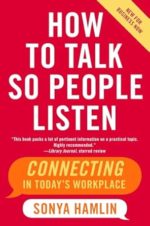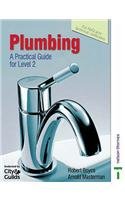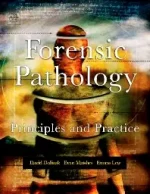-
Build Your Own Mutual Fund: How to Use a Personal Portfolio to Take Control of Your Financial Life
KShs 1,095.00Build Your Own Mutual Fund: How to Use a Personal Portfolio to Take Control of Your Financial Life [Brian O’Connell,
-
-
How to Talk So People Listen: Connecting in Today’s Workplace
KShs 1,500.00At a time when it’s harder than ever to get and keep people’s attention, we could all use some help. Enter Sonya Hamlin, author of the now classic How to Talk So People Listen (1988), and one of the country’s leading communication experts. In this revised and updated edition, Sonya Hamlin, arguably America’s leading communication expert, shows us how to successfully capture people’s attention so that they listen, understand,…
-
The Mission Song
KShs 400.00In an historic year for John le Carregrave;, Hodder & Stoughton are proud to announce the publication of THE MISSION SONG John le Carre was born in 1931. His third novel, The Spy Who Came in From the Cold, secured him a worldwide reputation, which was consolidated by the acclaim for his trilogy: Tinke, Tailor, Soldier, Spy; The Honorable Schoolboy, and Smiley’s People. His novels include The Little Drummer Girl, A Perfect Spy, The Russia House, Our Game, The Taileor of Panama, and Single & Single. John le Carre lives in Cornwall.
KShs 650.00 -
LV3 Little Red Riding Hood
KShs 495.00Give your child the best head start with reading. Have fun learning first sounds and words together, using the traditional story of Little Red Riding Hood. Phonics is the method of learning to read that most teachers use. Children learn the sounds made by letters, or group of letters, then they blend them together to make words. With 75 stickers and lots of story-based activities children will love learning to read with this educational and engaging phonics book. This paperback book has 32 pages and measures: 28 x 21 x 0.4cm
-
Understanding Psychology
KShs 9,525.00The overall philosophy of Understanding Psychology is to bring complex psychological concepts to students’ lives. The goal of this program is to make psychology relevant, fun, interesting, and even exciting, making it approachable. Understanding Psychology is an interactive book with:
- hands-on activities
- case studies
- current issues and readings about the field of psychology
The Understanding Psychology program was designed to help students understand how this subject is part of their day-to-day lives. Research in assessment and APA literature was reviewed. The program’s authors, academic consultants, and experienced Social Studies educators reviewed the assessment plan for Understanding Psychology. Understanding Psychology includes a variety of assessment instruments to support instruction. The test booklet provides three-part chapter tests: Matching, Multiple Choice, and Essay”
-
Terror Kid
KShs 650.00A shocking, moving and timely novel about the choices that shape us.Rico knows trouble. He knows the look of it and the sound of it. He also knows to stay away from it as best he can. Because if there’s one thing his Romany background has taught him, it’s that he will always be a suspect. Despite his efforts to stay on the right side of the law, Rico is angry and frustrated at the injustices he sees happening at home and around the world. He wants to do something – but what? When he is approached by Speech, a mysterious man who shares Rico’s hacktivist interests, Rico is given the perfect opportunity to speak out. After all, what harm can a peaceful cyber protest do…?From the bestselling author of REFUGEE BOY comes a powerful novel about justice, trust and idealism gone wrong that will make you look again at your definition of a terrorist.
-
Born A Crime: Stories From A South African Childhood
KShs 1,695.00Reading books is a kind of enjoyment. Reading books is a good habit. We bring you a different kinds of books. You can carry this book where ever you want. It is easy to carry. It can be an ideal gift to yourself and to your loved ones. Care instruction keep away from fire.
-
Plumbing: A Practical Guide for Level 2
Plumbing: A Practical Guide for Level 2 is an essential handbook for learners, apprentices, and trainees working towards their Level 2 plumbing qualification. Written in clear, accessible language, it covers all the key skills, knowledge, and safety practices required in modern plumbing.
This practical guide takes you step by step through fundamental topics such as pipework systems, hot and cold water supply, sanitation, central heating, and maintenance. With diagrams, worked examples, and real-world case studies, it helps build confidence in both theory and hands-on application.
Whether you’re starting your career in plumbing, refreshing your knowledge, or preparing for assessment, this book provides:
Comprehensive coverage of the Level 2 plumbing curriculum
Practical guidance on tools, techniques, and safe working practices
Clear explanations supported by illustrations and activities
Essential tips for workplace readiness and professional standards
Ideal for students, apprentices, and training centres, this is the go-to resource for mastering the skills and understanding needed to progress in the plumbing trade.
-
Forensic Pathology Principles and Practice
KShs 60,000.00Forensic Pathology is a comprehensive reference that uses a case-oriented format to address, explain and guide the reader through the varied topics encountered by forensic pathologists. Developed in response to a severe void in the literature, the book addresses topics ranging from medicolegal investigation of death to death scene investigation, forensic autopsy, and artifacts of resuscitation as well as complications of medical therapy, forensic osteology, forensic odontology, forensic photography, and death certification. The book includes various types of cases, including sudden natural death, asphyxia, motor vehicle collisions, death in custody, child abuse and elder abuse, acute psychiatric and emotional deaths, and pregnancy. It contains sample descriptions of pathological lesions which serve to aid pathologists in reporting their findings to law enforcement agencies, attorneys, and others involved in investigations of sudden death. The concepts outlined in the text are beautifully illustrated by large, colorful photographs. There are also “Do and Don’t” sections at the end of each chapter that provide guidance for handling the types of cases examined. This work will benefit not only experienced forensic pathologists, but also hospital pathologists who occasionally performs medicolegal autopsies; doctors in training; medical examiners; law enforcement personnel; crime scene investigators; attorneys; and fellows and students of the medical sciences.










